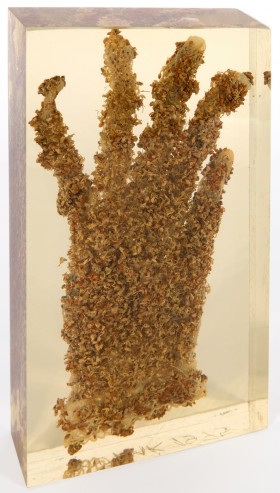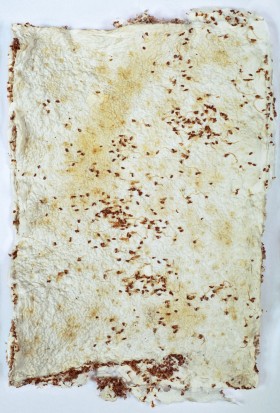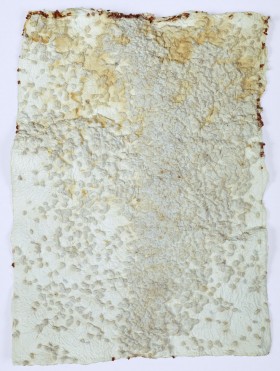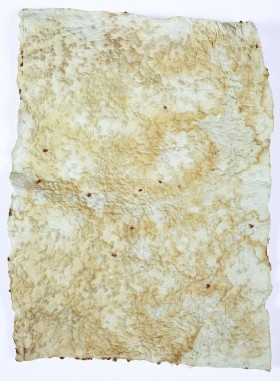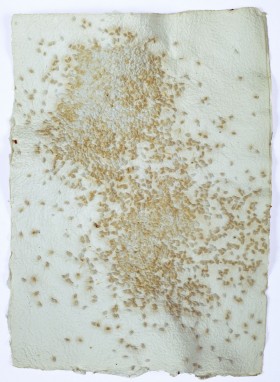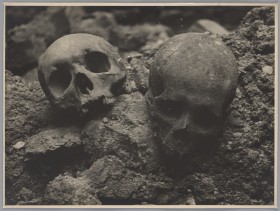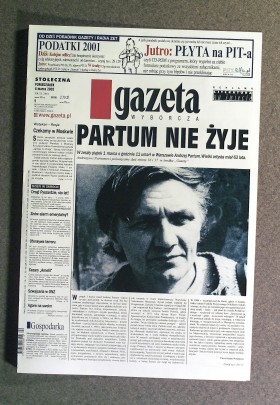Lady's Smock. Wgląd VI
- type of object: photography
- date: 1975
- material/technique: photography
- dimensions: 200 x 60 cm
- inventory No.: R-242
- image licensed under: CC BY-NC-ND 3.0
Teresa Murak first sowed garden cress in 1972. At Easter time, it is sowed on, among others, a piece of cellulose wadding, and its rapid growth symbolises the ability of nature to renew itself and bloom in springtime. During the performance Lady’s Smock (a common name of a wild variety of cress) at the Labirynt Gallery in 1975, the artist and the plants entered into a mutual sensual relation. Placed on a wet shirt, the seeds swelled, sprouted, and after a few hours began to grow under the influence of the woman’s body warmth. The impermanent result of the action was part of the postulate of identifying life — in this case the vegetation of a plant — with the creative process, formulated by the neo-avant-garde art of the 1970s. At the same time, this and other pieces by Murak fit into the circle of Judeo-Christian and pagan references that are important to her. As curator Sebastian Cichocki wrote, ‘The action of seed sowing becomes a meditation or a prayer. The individual sprouting plants are letters, creating a puzzling, unreadable, constantly falling apart and mutating text inscribed in the urban tissue. The action of writing on the earth using seeds is for the artist an act of faith, a gift, and a submission to the laws of nature and higher forces’.
Ewa Skolimowska, translated by Paulina Bożek

